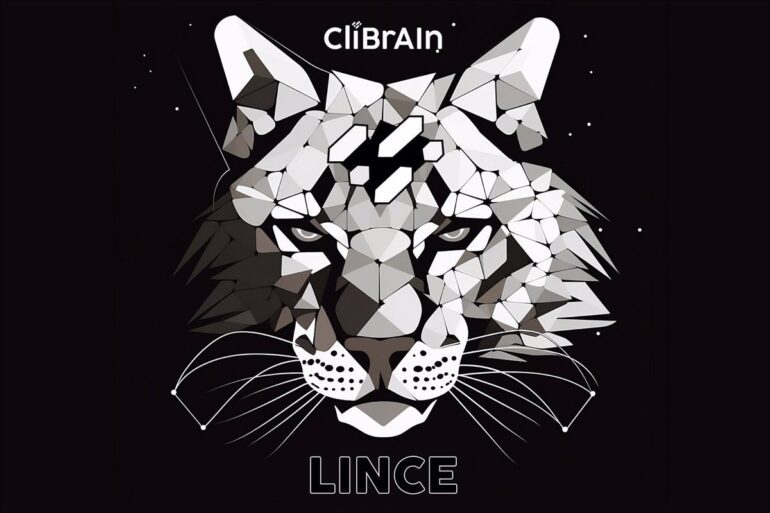TL;DR:
- Madrid-based AI startup Clibrain introduces Lince Zero, a Spanish-tuned LLM model.
- Lince Zero is trained on a dedicated corpus of Spanish language data and aims to offer a deeper understanding of the Spanish language.
- Clibrain’s LLM, Lince, is based on existing open-source technologies but benefits from the expertise of its senior engineering team.
- Clibrain’s CEO, Elena Gonzalez-Blanco, combines her linguistics research background with AI expertise to provide a unique perspective.
- Lince Zero is the first step in Clibrain’s roadmap, with a more powerful foundational model, Lince, in the pipeline.
- Clibrain emphasizes quality attention to linguistic detail rather than just model size as the key to success.
- Clibrain’s exclusive focus on the Spanish language sets it apart from competitors and enables a deeper understanding of linguistic nuances.
- Lince Zero matches the performance of GPT-3, surpassing the capabilities of previous models.
- Clibrain invites Spanish speakers to explore and provide feedback on their creations.
- The company has been self-funded so far but may consider additional investment to support its growth.
Main AI News:
In the quest to create cutting-edge generative AI models tailored specifically for Spanish speakers, Madrid-based AI startup Clibrain has emerged as a key contender. The company recently unveiled Lince Zero, a Spanish-language tuned LLM (Language Model) that has undergone extensive training on a dedicated corpus of Spanish language data. Lince Zero, a precursor to Clibrain’s forthcoming powerhouse model, Lince, which boasts an impressive 40 billion parameters, aims to bridge the gap in linguistic diversity and offer a deeper understanding of Spanish.
Spanish, being one of the most widely spoken languages globally, encompasses a rich tapestry of dialects and variants. Clibrain recognizes that this linguistic complexity poses a significant challenge for mainstream models to deliver satisfactory performance in Spanish. To overcome this hurdle, the company is dedicated to developing models capable of parsing and comprehending the intricate nuances of the Spanish language beyond the capabilities of the average LLM.
While Clibrain’s Lince leverages existing open-source technologies, it sets itself apart by harnessing the expertise of its senior engineering team in the field of AI. Founded in April 2023, Clibrain boasts a multidisciplinary workforce of nearly 30 professionals, with a core research and development lab focused on generative AI. CEO Elena Gonzalez-Blanco, equipped with a background in linguistics research and poetry, brings a unique perspective to the startup, having tapped into her extensive linguistic network and accumulated 15 years of language research to curate a distinctive training data corpus.
The initial release from Clibrain, Lince Zero, is freely available under an open-source license. While this LLM is based on existing open-source technologies, Clibrain promises that its foundational model will be unveiled in the near future. The launch of Lince Zero represents the first step on Clibrain’s ambitious roadmap, as the company sets its sights on developing subsequent domain-trained models atop its foundational one. Despite the parameter numbers indicating that these LLMs are not the largest in scale, Clibrain asserts that model size alone will not determine the competitive edge for generating enhanced Spanish language understanding. Instead, a meticulous focus on linguistic details and quality attention to nuance will be the key distinguishing factors, positioning Clibrain favorably in Spanish markets.
While Clibrain’s Lince joins the ranks of conversational AI models for Spanish, such as the Barcelona Supercomputing Center’s MarIA, Clibrain confidently claims to have surpassed its competitors, offering the most technologically advanced model tailored to the Spanish-speaking market thus far. Other language-optimized LLMs, like Baidu’s Chinese language model Ernie or the German-tuned LLM model family, are also making strides in non-English language domains. South Korean tech giant Naver is actively engaged in training generative AI models in Korea.
Clibrain, however, emphasizes that its exclusive focus on the Spanish language will empower its forthcoming foundational model and subsequent domain-trained models to excel in understanding the intricacies of Spanish linguistic nuances beyond the capabilities of average LLMs. Lince Zero currently matches the performance level of GPT-3, whereas Clibrain suggests that MarIA’s performance is on par with GPT-2. As benchmarking the linguistic performance of LLMs continues to evolve as a burgeoning field, Clibrain invites Spanish speakers to explore its creations and provide valuable feedback. To date, Clibrain’s co-founders have self-funded the company’s development efforts, leveraging proceeds from previous startup successes. While the company has not yet secured a vast investor network or substantial external funding, Gonzalez-Blanco explains that its primary focus has been on refining core models and delivering initial products to market rather than immediate external fundraising. However, as Clibrain progresses along its Lince product roadmap, the company may explore opportunities for significant investments to accelerate its growth beyond the founders’ personal contributions.
Conclusion:
Clibrain’s introduction of Lince Zero and their upcoming foundational model, Lince, represents a significant advancement in Spanish language understanding. By addressing the challenges posed by linguistic diversity and leveraging their expertise in AI and linguistics, Clibrain aims to provide enhanced linguistic nuance and comprehension in the Spanish-speaking market. Their unique approach and focus on quality linguistic detail rather than sheer model size position them as key players in this space. With Lince Zero matching the performance of GPT-3, Clibrain demonstrates its commitment to delivering top-notch AI solutions for Spanish speakers. As Clibrain continues to refine and expand its product offerings, potential investors and stakeholders should take note of the company’s dedication to bridging the gap in Spanish language AI models and their potential impact on the market.

